Stephanie A. Mann's Blog, page 255
November 8, 2013
Forbidden Music (Follow up to The Rape of Europa)
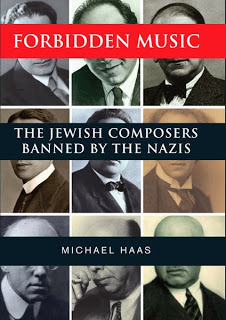 In addition to stealing art from Jewish collectors and banning so-called degenerate art, Hitler also eliminated as many Jewish composers (and performers) as possible. After I posted on The Rape of Europa and the recent find of many lost and even unknown works by Picasso, Klee, Chagall, and others, I recalled reading a book review in The Wall Street Journal by Norman Lebrecht about that era:
Forbidden Music: The Jewish Composers Banned by the Nazis
by Michael Haas. Haas was the producer of Decca's Entartete Musik series. Mr. Lebrecht was a little let down by Haas' book, which he hoped would provide background to the making of that series:
In addition to stealing art from Jewish collectors and banning so-called degenerate art, Hitler also eliminated as many Jewish composers (and performers) as possible. After I posted on The Rape of Europa and the recent find of many lost and even unknown works by Picasso, Klee, Chagall, and others, I recalled reading a book review in The Wall Street Journal by Norman Lebrecht about that era:
Forbidden Music: The Jewish Composers Banned by the Nazis
by Michael Haas. Haas was the producer of Decca's Entartete Musik series. Mr. Lebrecht was a little let down by Haas' book, which he hoped would provide background to the making of that series:Decca's restitution was an extraordinary adventure into the unknown. Almost everything that Mr. Haas recorded was novel, unexpected, often unbearably poignant. At a Prague recording of Pavel Haas's effervescent opera "The Charlatan," none could ignore the proximate facts of the Czech composer's fate—incarcerated in the nearby Terezin camp, then gassed, age 45, in Auschwitz. By the time classical recording hit a mid-1990s downturn and cost-cutters pulled the plug on the series, Mr. Haas had produced 31 albums and rewritten a sizable chunk of the verdict of history.
The scale of dispossession defies belief. Goldschmidt told me that he was personally acquainted with more than 100 composers who fled Germany. My hope was that "Forbidden Music: The Jewish Composers Banned by the Nazis" would tell the romantic story of Mr. Haas's quixotic mission. Perhaps prompted by an academic publisher, he decided to cast his net wider and seek to place the Nazi prohibition in a broader context of German cultural anti-Semitism. The first third of the book tell us little that we have not read elsewhere. Oppression begins with the appalling pamphlet "Das Judenthum in der Musik," issued by Richard Wagner under a pseudonym in 1850 and again under his own name 20 years later. In it Wagner claimed that Jews could not achieve originality in German art. Hitler used this charge as his manifesto for cultural cleansing.
But he notes that
His chronicle is nonetheless a valuable compendium of untold stories, a corrective to standard histories of music and an essential reference point for anyone engaged in the culture and politics of the 20th century.
Be warned that the risk in reading "Forbidden Music" is that you will lose many hours of your life relistening to the Entartete Musik series and its triumphant restorations. Korngold's violin concerto is now, finally, at the center of concert repertoire. The works of Terezin composers Pavel Haas, Viktor Ullman and Hans Krása are widely played. Hans Gál's symphonies are appearing on record. Eisler is sung all over, and once-forbidden music is seeping into the musical DNA of the 21st century, the Nazi purpose defeated.
Terry Teachout also reviewed Haas's book for Commentary magazine.
One composer Lebrecht mentions is Walter Braunfels, whose Jewish father had been baptized in the Lutheran church and had himself become a Catholic. Braunfels encountered Hitler early in the latter's career, when he wanted the composer to write an anthem for his National Socialist movement. As this essay in the January 7, 2011 issue of The New York Times noted, his grandson told that story, and the Braunfels' revival has continued after the Entartete series ended production:
Evidently the future dictator was unaware that Braunfels was of Jewish descent, the son of a jurist father who had converted to Lutheranism. Raised in that faith, Braunfels embraced Roman Catholicism after serving at the front in World War I. “If our name had been Bernstein,” Stephan Braunfels said, “Hitler would have had to know better.”
“Die Vögel,” which presumably took that Mephisto to Braunfels’s door but then disappeared for decades, has been making something of a comeback. In 1996 Decca issued a studio recording in the short-lived series Entartete Musik (Degenerate Music) to respectful reviews. Now a video version, filmed last year at the Los Angeles Opera, is available on an Arthaus DVD.
As James Conlon, who conducted, suggests in an accompanying essay, we hear the music now without bothersome distractions. “The importance of knowing who was part of the avant-garde and who was not fades with time,” Mr. Conlon writes. “It is the essence of the music, in my opinion, not its historical-musicological placement, that matters. Had ‘Die Vögel’ been written in 1875, would we listen to it differently because, at that time, it would have been progressive? Should we continue to ignore a work such as this because we consider it old-fashioned?”
Like other composers crushed by the Third Reich, Braunfels has been getting a second chance over the last quarter century or so, with “Die Vögel” (after Aristophanes, with a Christian overlay) only one piece of a larger picture. His discography has expanded to include large-scale compositions like the Catholic mystery opera “Verkündigung” (“Annunciation”), the bewildering but intoxicating comedy “Prinzessin Brambilla,” a large-scale set of muscular but sumptuous orchestral variations on a theme of Berlioz (“Phantastische Erscheinungen Eines Themas von Hector Berlioz”) and the majestic Te Deum as well as chamber music.
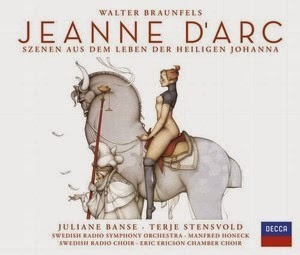 Now Decca has released Braunfels’s magnum opus, the opera “Jeanne d’Arc” (written between 1939 and 1941 as “Szenen aus dem Leben der Heiligen Johanna”), which could raise his profile another notch. Recorded live at its concert premiere in Stockholm in 2001, the score plays like the missing link between Wagner’s otherworldly “Parsifal” and Kurt Weill’s jazzy, machine-age “Rise and Fall of the City of Mahagonny,” with perhaps a jolt of the Stravinsky of “The Rite of Spring” mixed in. The theatrical premiere at the Deutsche Oper Berlin in 2008 is tentatively scheduled for DVD release by Arthaus in the fall.
Now Decca has released Braunfels’s magnum opus, the opera “Jeanne d’Arc” (written between 1939 and 1941 as “Szenen aus dem Leben der Heiligen Johanna”), which could raise his profile another notch. Recorded live at its concert premiere in Stockholm in 2001, the score plays like the missing link between Wagner’s otherworldly “Parsifal” and Kurt Weill’s jazzy, machine-age “Rise and Fall of the City of Mahagonny,” with perhaps a jolt of the Stravinsky of “The Rite of Spring” mixed in. The theatrical premiere at the Deutsche Oper Berlin in 2008 is tentatively scheduled for DVD release by Arthaus in the fall. If you are wondering about the connection between this targeted destruction of art and music in Nazi Germany and the English Reformation, it is of course indirect. Nevertheless, the common issues of destroying the legacy of a material culture, the art, architecture, books, and music (although the polyphonic music of late medieval England did survive through the talent of William Byrd, although much was lost) are poignantly similar.
Published on November 08, 2013 22:30
A Catholic Martyr in Oxford: Blessed George Napier
His name is variously given as Napper or Napier. From the
Catholic Encyclopedia
:
English martyr, born at Holywell manor, Oxford, 1550; executed at Oxford 9 November, 1610. He was a son of Edward Napper (d. in 1558), sometime Fellow of All Souls College, by Anne, his second wife, daughter of John Peto, of Chesterton, Warwickshire, and niece of William, Cardinal Peto. He entered Corpus Christi College 5 January, 1565-6, but was ejected in 1568 as a recusant. On 24 August, 1579, he paid a visit to the English College at Reims, and by December, 1580, he had been imprisoned. He was still in the Wood Street Counter, London, on 30 September, 1588; but was liberated in June, 1589, on acknowledging the royal supremacy.
He entered the English College, Douai, in 1596, and was sent on the mission in 1603. He appears to have lived with his brother William at Holywell. He was arrested at Kirtlington, four miles from Woodstock, very early in the morning of 19 July, 1610, when he on him a pyx containing two consecrated Hosts as well as a small reliquary. Brought before Sir Francis Eure at Upper Heyford (Wood says before a justice named Chamberlain), he was strictly searched; but the constable found nothing but his breviary, his holy oils, and a needle case with thread and thimble. The next day he was sent to Oxford Castle, and indicted at the session soon after under 27 Eliz., c. 2 for being a priest. The possession of the oils was held to be conclusive and he was condemned, but reprieved. In gaol he reconciled a condemned felon named Falkner, and this was held to aggravate his crime, but as late as 2 November it was believed that he would have his sentence commuted to one of banishment.
As he refused the oath of allegiance, which described the papal deposing power as a "false, damnable, and heretical" doctrine, it was decided to execute him. He suffered between one and two in the afternoon, having said Mass that morning. His head according to Wood was set up on Tom Gateway; according to Challoner's less probable statement on Christ Church steeple. His quarters were placed on the four city gates, but at least some were secretly removed, and buried in the chapel (now a barn) of Sanford manor, formerly a preceptory of Knights Templar.
In October of 2010 (just a month after Pope Benedict XVI's visit to Scotland and England), Archbishop Bernard Longley of Birmingham dedicated a plaque to the martyr:
During his homily Archbishop Longley said: "Today we gather as pilgrims to celebrate the Mass of the Martyrs of Oxford University and to commemorate the 400th Anniversary of the martyrdom of Blessed George Napier. As pilgrims we are part of a long tradition of Christians setting out from home on a journey of faith to some place particularly associated with the life of our Lord - of those most closely associated with him as Christian witnesses.
"The life of a pilgrim is touched and transformed through the experience of pilgrimage and of the ways that are linked with the life and witness of the saints we honour. For us this pilgrimage is characterised by the fidelity to the Church and teaching of Christ demonstrated by Blessed George Napier and his companion martyrs – and by the courage of the Holy Spirit at work within them and strengthening them in the final act of love and of witness in this city."
The Archbishop of Birmingham said: "The lives of our martyrs were taken from them because they adhered to their faith in Christ within the Catholic Church. Their witness is echoed for me whenever we sing the beautiful words of Blessed John Henry Newman: 'And I hold in veneration, For the love of him alone, Holy Church as his creation, And her teaching as his own.'"
Archbishop Bernard Longley concluded: "One month ago an apostolic witness came to strengthen our faith. We continue to benefit from the impact of Pope Benedict’s visit to this diocese. Paradoxically in the time of Blessed George Napier and his companions the role of faith as the foundation of civil society was hardly questioned, yet the liberty to practice faith was narrowly defined.
"Today the Holy Father has reminded us of the importance of faith in strengthening civil society and of the opposition we can encounter. He said: 'There are some who now seek to exclude religious belief from public discourse, to privatise it or even to paint it as a threat to equality and liberty. Your religion is in fact a guarantee of authentic liberty and respect, leading us to look upon every person as a brother or sister."
You may see a picture of the plaque here.
English martyr, born at Holywell manor, Oxford, 1550; executed at Oxford 9 November, 1610. He was a son of Edward Napper (d. in 1558), sometime Fellow of All Souls College, by Anne, his second wife, daughter of John Peto, of Chesterton, Warwickshire, and niece of William, Cardinal Peto. He entered Corpus Christi College 5 January, 1565-6, but was ejected in 1568 as a recusant. On 24 August, 1579, he paid a visit to the English College at Reims, and by December, 1580, he had been imprisoned. He was still in the Wood Street Counter, London, on 30 September, 1588; but was liberated in June, 1589, on acknowledging the royal supremacy.
He entered the English College, Douai, in 1596, and was sent on the mission in 1603. He appears to have lived with his brother William at Holywell. He was arrested at Kirtlington, four miles from Woodstock, very early in the morning of 19 July, 1610, when he on him a pyx containing two consecrated Hosts as well as a small reliquary. Brought before Sir Francis Eure at Upper Heyford (Wood says before a justice named Chamberlain), he was strictly searched; but the constable found nothing but his breviary, his holy oils, and a needle case with thread and thimble. The next day he was sent to Oxford Castle, and indicted at the session soon after under 27 Eliz., c. 2 for being a priest. The possession of the oils was held to be conclusive and he was condemned, but reprieved. In gaol he reconciled a condemned felon named Falkner, and this was held to aggravate his crime, but as late as 2 November it was believed that he would have his sentence commuted to one of banishment.
As he refused the oath of allegiance, which described the papal deposing power as a "false, damnable, and heretical" doctrine, it was decided to execute him. He suffered between one and two in the afternoon, having said Mass that morning. His head according to Wood was set up on Tom Gateway; according to Challoner's less probable statement on Christ Church steeple. His quarters were placed on the four city gates, but at least some were secretly removed, and buried in the chapel (now a barn) of Sanford manor, formerly a preceptory of Knights Templar.
In October of 2010 (just a month after Pope Benedict XVI's visit to Scotland and England), Archbishop Bernard Longley of Birmingham dedicated a plaque to the martyr:
During his homily Archbishop Longley said: "Today we gather as pilgrims to celebrate the Mass of the Martyrs of Oxford University and to commemorate the 400th Anniversary of the martyrdom of Blessed George Napier. As pilgrims we are part of a long tradition of Christians setting out from home on a journey of faith to some place particularly associated with the life of our Lord - of those most closely associated with him as Christian witnesses.
"The life of a pilgrim is touched and transformed through the experience of pilgrimage and of the ways that are linked with the life and witness of the saints we honour. For us this pilgrimage is characterised by the fidelity to the Church and teaching of Christ demonstrated by Blessed George Napier and his companion martyrs – and by the courage of the Holy Spirit at work within them and strengthening them in the final act of love and of witness in this city."
The Archbishop of Birmingham said: "The lives of our martyrs were taken from them because they adhered to their faith in Christ within the Catholic Church. Their witness is echoed for me whenever we sing the beautiful words of Blessed John Henry Newman: 'And I hold in veneration, For the love of him alone, Holy Church as his creation, And her teaching as his own.'"
Archbishop Bernard Longley concluded: "One month ago an apostolic witness came to strengthen our faith. We continue to benefit from the impact of Pope Benedict’s visit to this diocese. Paradoxically in the time of Blessed George Napier and his companions the role of faith as the foundation of civil society was hardly questioned, yet the liberty to practice faith was narrowly defined.
"Today the Holy Father has reminded us of the importance of faith in strengthening civil society and of the opposition we can encounter. He said: 'There are some who now seek to exclude religious belief from public discourse, to privatise it or even to paint it as a threat to equality and liberty. Your religion is in fact a guarantee of authentic liberty and respect, leading us to look upon every person as a brother or sister."
You may see a picture of the plaque here.
Published on November 08, 2013 22:30
November 7, 2013
Mary of Scotland a Martyr? Elena Maria Vidal's Opinion
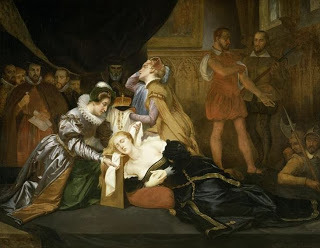 According to Elena Maria Vidal, there is quite a debate on an Elizabethan fan website about Mary, Queen of Scots, executed by (reluctant) order of Elizabeth I and whether or not she could be considered a martyr for her Catholic faith. She offered her opinion and supporting arguments in the comments and then restated them on her blog,
Tea at Trianon
:
According to Elena Maria Vidal, there is quite a debate on an Elizabethan fan website about Mary, Queen of Scots, executed by (reluctant) order of Elizabeth I and whether or not she could be considered a martyr for her Catholic faith. She offered her opinion and supporting arguments in the comments and then restated them on her blog,
Tea at Trianon
:My opinion is that, yes, Mary can be considered a martyr of the Catholic faith. First of all, Elizabeth should not have been holding Mary prisoner all of those years. As much as I admire Elizabeth, she had no legal right to keep Mary captive. She did so for several reasons, one of which was that Mary was a Catholic contender for the throne of England and thus a rallying point for the Catholics of the realm who were being persecuted by Elizabeth.
Secondly, Mary did not plot to kill Elizabeth; she plotted to *escape* which as the prisoner of a foreign power she had every right to do. Why is it so wrong for Mary to plot against Elizabeth when Elizabeth was holding her as a prisoner?
Thirdly, Antonia Fraser and Alison Weir demonstrate that Mary played no part in Darnley’s murder and she married Bothwell unwillingly, after he raped her. Elizabeth should have helped Mary instead of having her imprisoned.
See her blog for reasons four and five. I found her arguments to be convincing and well-stated, especially the fifth on the unfairness of the trial.
One trap that some of the other commenters fall into is thinking that a martyr--canonized or not--must have been perfect in all prior actions. Mary might not have been as politique as Elizabeth I in her handling of her marriage: especially in choosing Darnley, but it's clear that the marriage to Bothwell was under duress. Perhaps she made mistakes in other political choices as Queen of Scotland, but they have little bearing on whether or not we can say that she died because she was a Catholic.
What do you think?
Published on November 07, 2013 23:00
Celebrating 25 Years of/at Eighth Day Books
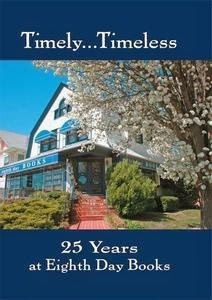
Before my husband and I went on vacation to the Ozarks, we celebrated the 25th Anniversary of Eighth Day Books with a reading and party and sale at that great bookstore. I read from my submission to the festschrift for Warren Farha and his store, along with 13 other customers and friends to whom Eighth Day Books is more than a bookstore. Some of the presentations and essays were deeply moving, some were funny, but all showed what a special person Warren Farha is and what a special place Eighth Day Books is, as a bricks-and-mortar bookstore, as an on-line presence, and as a travelling book seller.
More about Timely . . . Timeless from the Eighth Day Books website:
Conceived as a way to honor the store’s place in the world, Timely…Timeless serves the equally important purpose of honoring Eighth Day’s loyal and enthusiastic customers—friends we’ve been honored to know and serve. The book’s essays, poems, and photographs celebrate this mutual affection.
Named “one of the best religious bookstores in the country” by Publisher’s Weekly, Eighth Day was founded in 1988 by Warren Farha, whose essay on the store’s founding joins the work of other notable contributors including: Kansas Poet Laureate Caryn Mirriam-Goldberg, University of Missouri professor Scott Cairns, Newbery award-winner Clare Vanderpool, and Wichita writers Stephanie Mann, Roy Beckemeyer, Bo Bonner, and Arlice Davenport.
Carolyn Ballinger of Kingman, KS, calls the store “a haven of peace in a world of sensory overload.” Notre Dame’s Joshua Seachris likens Eighth Day to “a sanctuary filled with cloth and paper treasures,” while John Traffas, Atchison, KS, describes the “happy combination of a pub and a chapel.”
Eighth Day is even extending the opportunity to celebrate the anniversary by posting additional reflections on its blog:
In the coming weeks, we will be posting micro-essays submitted by you—our friends and customers—about what Eighth Day Books means to you.
Our published collection (Timely…Timeless) is available online, but for those of you who missed the submission deadline, we would like to extend our invitation through the end of the year. Everyone who has crossed paths with Eighth Day—whether in Wichita, on the road, or in virtual fashion via the internet or telephone—is invited to contribute. Share reminiscences, humorous moments, epic sagas, paens (sic), poetic waxings and/or love letters.
Published on November 07, 2013 22:30
November 6, 2013
Joanna Bogle on the Ordinariate
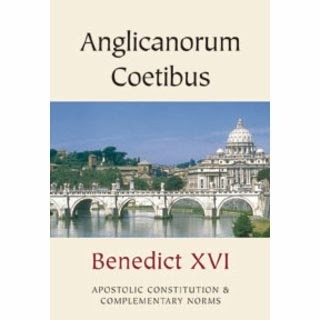
Pope Emeritus Benedict XVI issued Anglicanorum Coetibus on November 4, 2009, and Joanna Bogle looks at the progress of the Anglican Ordinariate in England in The Catholic World Report . Our Lady of Walsingham was established in January, 2011 and has since found a home in London, at least, with parish churches, and continues to grow:
So far, some 80 clergy and about 1,000 laity in Britain have responded to the invitation made by Pope Benedict in Anglicanorum Coetibus. The Ordinariate of Our Lady of Walsingham came into being in 2011 with three former Anglican bishops forming its leadership. The following year two other ordinariates were established—the Ordinariate of the Chair of St. Peter in the United States and Canada, and the Ordinariate of the Southern Cross in Australia.
The Ordinariate of Our Lady of Walsingham has groups in various parts of Britain. In London, two churches have been given over to the ordinariate by the Catholic bishops: one in Warwick Street—a building with an extraordinary history going back to the days when Catholics could only worship in chapels linked to foreign embassies—and one on the south bank of the river Thames, near London Bridge. It is this Church of the Most Precious Blood , a late 19th-century building next to the railway viaduct, not far from Borough Market, that is now the spiritual home of a thriving ordinariate parish community. Father Christopher Pearson was formerly the vicar of the Anglican church of St Agnes, at Kennington. He and a number of parishioners responded to the Holy Father’s call, and after due process—a time of reflection, decision, and instruction—were formally received into full communion with the Catholic Church and confirmed. A while later, Father Christopher was ordained deacon and then priest in St. George’s Cathedral, Southwark. They all worshipped for a while at St. Wilfrid’s Catholic Church in Kennington, not far from their old home at St. Agnes. And then the Church of the Most Precious Blood becoming vacant with the planned departure of the Salvatorean Order, which had been running the parish, and it was given into ordinariate care. But that does not tell the whole story. There have been so many adventures along the way. Media coverage of the ordinariate has been, to put it mildly, mixed. The Times ran a headline announcing that the Pope had “parked his tanks” on the Anglican lawn. There had been hopes that Anglican clergy seeking full communion with large groups of parishioners might be able to continue using their churches—perhaps under a sharing arrangement. No such possibilities were allowed. Nor did the Catholic bishops of England and Wales seem enthusiastic: while there was official goodwill, and ordinations were celebrated at Westminster Cathedral and elsewhere with glorious music and a packed congregations, there was an apparent reluctance to help get things moving. Ordinariate groups found that they were, at best, offered a time-slot for Mass in a local Catholic parish. Ordinariate clergy were generally absorbed into the mainstream of Catholic life, working as chaplains in hospitals and parishes, and caring for their ordinariate groups, but without buildings of their own. Read the rest here.
Published on November 06, 2013 23:00
Lost Works Found in Munich: The Rape of Europa Revisited
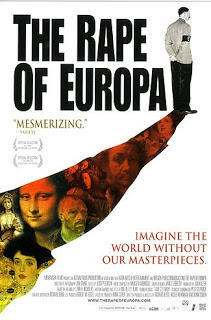 I find the documentary,
The Rape of Europa
, about Nazi (and Communist) thievery of the art collections of Europe and particularly Europe's Jewish art collectors, haunting and disturbing. It's haunting to think of the works of art still missing and it's disturbing to note that the confiscation of the artworks from the Jewish owners was part of the great Nazi goal to obliterate the Jewish people.
I find the documentary,
The Rape of Europa
, about Nazi (and Communist) thievery of the art collections of Europe and particularly Europe's Jewish art collectors, haunting and disturbing. It's haunting to think of the works of art still missing and it's disturbing to note that the confiscation of the artworks from the Jewish owners was part of the great Nazi goal to obliterate the Jewish people. Now comes the story that many works of art were found in 2011--in an apartment searched in the course of a tax evasion investigation:
The legacy of Nazi war crimes resurfaced on Monday when a German magazine reported that a trove of artworks looted from Jewish collectors had been discovered in a Munich apartment. According to the weekly Focus magazine, the hoard of paintings could be worth more than a billion dollars, as it includes masterpieces by Henri Matisse, Pablo Picasso, Marc Chagall and Paul Klee. German authorities discovered the works almost by accident in the home of Cornelius Gurlitt, the son of a Munich art collector. As the details of the case have continued to emerge so have the questions about the German authorities’ decision-making.
The problem is that the art was found in 2011 and the news is just now being reported in 2013. In fact, Cornelius Gurlitt was able to auction off one of the works--which Adolf Hitler would have termed "degenerate" art--even after authorities found the treasure trove.
One of the deeply disturbing issues in The Rape of Europa is how hard it is for families to get their property back. The documentary focuses on the Bloch-Bauer family and the portraits of Adele Bloch-Bauer by Gustav Klimt. Government authorities, judges, and museums are reluctant to part with ill-gotten gains: it seems a matter of justice to me that the rightful owners should receive their property. One of the concerns with this case is that authorities are hiding the hidden art. The BBC notes that:
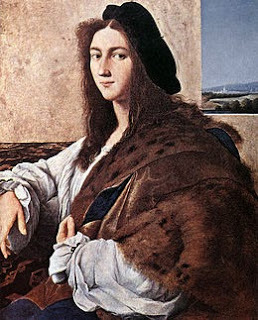 Art is the last unfinished business of World War Two. Though the Allies uncovered large numbers of stolen paintings in 1945 in the Alt Aussee salt mines near Salzburg, and in a castle south of Munich, an unknown number have been lost forever. Russia holds more than 120,000 wartime art objects in three museums round Moscow. In many cases, the quality of vanished art was the highest. An important Raphael - Portrait of A Young Man - taken from Catholic owners in Poland heads a list of missing art which amounts to a small National Gallery: paintings by Rubens, Van Dyck and Rembrandt to the fore. [Note that someone knows something about where this Raphael painting is--that it's in a bank vault somewhere safe and should be returned to Poland someday soon, according to this story from 2012.]
Art is the last unfinished business of World War Two. Though the Allies uncovered large numbers of stolen paintings in 1945 in the Alt Aussee salt mines near Salzburg, and in a castle south of Munich, an unknown number have been lost forever. Russia holds more than 120,000 wartime art objects in three museums round Moscow. In many cases, the quality of vanished art was the highest. An important Raphael - Portrait of A Young Man - taken from Catholic owners in Poland heads a list of missing art which amounts to a small National Gallery: paintings by Rubens, Van Dyck and Rembrandt to the fore. [Note that someone knows something about where this Raphael painting is--that it's in a bank vault somewhere safe and should be returned to Poland someday soon, according to this story from 2012.]Five years ago Austria revealed the existence of more than 10,000 paintings and sculptures, hidden since 1945 in monasteries along the Danube and in state institutions.
Their Jewish owners had not been traced; how hard the Austrian government had tried to trace them was not made clear.
An Austrian list exists on the internet for descendants of the original owners to come forward - if, that is, they can prove the ownership of Jews in concentration camps, or who fled in panic without documents or photographs as Nazi forces approached.
London dealers close to the "restitution" business predict that 100 to 150 paintings will come off the walls of German museums in the next 25 years and be restored to the families of their original owners.
As paintings washed around Europe in the 1950s without clear ownership, German museums whose collections of the 20th Century had been wiped out by Hitler bought what they could, at cheap prices, without asking too many questions.
The past now catches up with the present. Lawyers in Vienna and Berlin now offer "no win no fee" deals to the descendants of concentration camp victims.
Published on November 06, 2013 22:30
November 5, 2013
Leanda de Lisle on Mary I
From
The Catholic Herald
:
There will be no ‘Mary I and her People’ exhibitions to match that of Elizabeth I currently showing at the National Gallery. While Elizabeth I is regularly voted our most popular ever monarch her Catholic elder half sister remains associated with her late seventeenth century sobriquet, ‘Bloody Mary’. It is assumed she was hated in her lifetime. In fact she was a popular queen, and one from whom Elizabeth learned much.
Mary’s accession to the throne in 1553 was not a smooth one. Her half brother, Edward VI, was a passionate Protestant, and when, aged fifteen, he fell gravely ill he wrote a will that excluded Mary from the throne. Instead it was left to his Protestant cousin, Lady Jane Grey. The majority of the political elite signed up to Edward’s will, and the Imperial ambassadors, reporting to Mary’s most powerful ally, her cousin the Holy Roman Emperor Charles V, advised him to accept the situation as a fait accompli. But Mary proved to be made of sterner stuff than the Imperial ambassadors,
launching a successful coup against Jane with the support of large numbers of the ‘common people’.
England was not then a predominately Protestant country. The fact Mary was a Catholic did not, therefore, greatly trouble her subjects. More important to them was Mary’s impeccable royal heritage. Each of her four grandparents was the head of their royal house, and, of course, her father was Henry VIII.
And she goes on to note the congruence between Mary's metaphor of the queen regnant's marriage to the kingdom and motherhood to her people and Elizabeth I's imagery:
Although it is often claimed that Mary did not have Elizabeth’s personal charisma, she too possessed qualities in this regard. They had been demonstrated most clearly in 1554, when a speech at the Guildhall had roused London in her defence against the most dangerous revolt of her reign. Mary had said then that she was married to her kingdom, describing her coronation ring as a wedding band, and her love of her subjects as that of a mother for her children.
These were phrases and motifs that Elizabeth would use repeatedly and would become absolutely central to her queenship. But while the dark side of Gloriana is forgotten, Mary is remembered predominately as a figure of gothic horror.
Read the rest here.
There will be no ‘Mary I and her People’ exhibitions to match that of Elizabeth I currently showing at the National Gallery. While Elizabeth I is regularly voted our most popular ever monarch her Catholic elder half sister remains associated with her late seventeenth century sobriquet, ‘Bloody Mary’. It is assumed she was hated in her lifetime. In fact she was a popular queen, and one from whom Elizabeth learned much.
Mary’s accession to the throne in 1553 was not a smooth one. Her half brother, Edward VI, was a passionate Protestant, and when, aged fifteen, he fell gravely ill he wrote a will that excluded Mary from the throne. Instead it was left to his Protestant cousin, Lady Jane Grey. The majority of the political elite signed up to Edward’s will, and the Imperial ambassadors, reporting to Mary’s most powerful ally, her cousin the Holy Roman Emperor Charles V, advised him to accept the situation as a fait accompli. But Mary proved to be made of sterner stuff than the Imperial ambassadors,
launching a successful coup against Jane with the support of large numbers of the ‘common people’.
England was not then a predominately Protestant country. The fact Mary was a Catholic did not, therefore, greatly trouble her subjects. More important to them was Mary’s impeccable royal heritage. Each of her four grandparents was the head of their royal house, and, of course, her father was Henry VIII.
And she goes on to note the congruence between Mary's metaphor of the queen regnant's marriage to the kingdom and motherhood to her people and Elizabeth I's imagery:
Although it is often claimed that Mary did not have Elizabeth’s personal charisma, she too possessed qualities in this regard. They had been demonstrated most clearly in 1554, when a speech at the Guildhall had roused London in her defence against the most dangerous revolt of her reign. Mary had said then that she was married to her kingdom, describing her coronation ring as a wedding band, and her love of her subjects as that of a mother for her children.
These were phrases and motifs that Elizabeth would use repeatedly and would become absolutely central to her queenship. But while the dark side of Gloriana is forgotten, Mary is remembered predominately as a figure of gothic horror.
Read the rest here.
Published on November 05, 2013 23:00
John Carroll, First Catholic Bishop in the United States
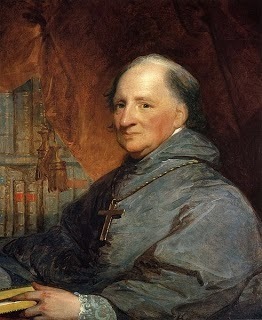 On November 6, 1789, Pope Pius VI appointed John Carroll as the first bishop in the new United States of America: in Baltimore, Maryland. According to the On this day in 1789, Pope Pius VI appoints John Carroll bishop of Baltimore, making him the first Catholic bishop in the United States.
On November 6, 1789, Pope Pius VI appointed John Carroll as the first bishop in the new United States of America: in Baltimore, Maryland. According to the On this day in 1789, Pope Pius VI appoints John Carroll bishop of Baltimore, making him the first Catholic bishop in the United States.Carroll was born in Upper Marlboro, Maryland, in 1735. His mother came from a wealthy family and had been educated in France. At age 13, Carroll sailed for France in order to complete his own education at St. Omer's College in French Flanders. At age 18, he joined the Society of Jesus, and after a further 14 years of study in Liege, he received ordination as a priest at age 34. Pope Clement XIV's decision in 1773 to dissolve the Jesuit order, however, ended Carroll's European career.
Three years after Carroll's return to Maryland, the need to make allies of French Catholics in Canada created an opportunity for him to join a Congressional delegation dispatched to negotiate with the Canadians. Benjamin Franklin served on the same delegation, and although the mission failed, Franklin proved an excellent ally to Carroll. In 1784, Franklin recommended to the papal nuncio in Paris that Carroll assume the position of Superior of Missions in the United States of North America, which removed American Catholics from the authority of the British Catholic hierarchy. In this role, as bishop and ultimately as the first archbishop in the United States (1808), Carroll oversaw the creation of leading Catholic institutions in the new nation, including the nation's first Catholic university (Georgetown University, founded in 1789) and cathedral (Baltimore Basilica, built in 1806).
More about John Carroll and the Carroll family here. The great connection between the Carroll family and the English Reformation is that the Carrolls of Maryland endured similar recusancy laws in colonial Maryland as the Catholics of England--in spite of the fact the Maryland had been founded by the Lords Baltimore as a colony in which both Catholics and Protestants were to be able to practice their religion without government interference--and thus John and his brother Daniel and his cousin Charles attended the College of St. Omers (what we would now call a high school in the USA) in the Spanish Netherlands. Father Robert Parsons, SJ founded St. Omers--now Stonyhurst in England--for the Catholic laymen of England because they could not attend Catholic school in England (or in the English colonies).
Published on November 05, 2013 22:30
November 4, 2013
The Fifth of November on the Son Rise Morning Show!
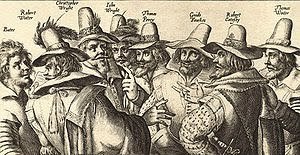 I'll be on the Son Rise Morning Show this morning to discuss the Gunpowder Plot and the Fifth of November: you can listen on-line here or on your local EWTN station a little after 7:45 a.m. Eastern (6:45 a.m. Central).
I'll be on the Son Rise Morning Show this morning to discuss the Gunpowder Plot and the Fifth of November: you can listen on-line here or on your local EWTN station a little after 7:45 a.m. Eastern (6:45 a.m. Central).November 5th marks the anniversary of the discovery of the Gunpowder Plot. I think this is one of the saddest episodes of Catholic reaction to the recusancy and penal laws imposed upon them by the English government. It was so desperate and impossible, not to mention absolutely murderous and immoral. Robert Catesby, Guy Fawkes, and the other conspirators thought that they could blow up Parliament and the Royal Family, except for Elizabeth, the oldest daughter whom they would kidnap and force to rule under their control--and the people of England would rise up against their rulers and put them in charge!
Instead they either died on the scaffold as traitors or in fights with local constabularies, implicating priests accused of hearing their confessions and not betraying the sanctity of the Sacrament by reporting them to the government. Priests like St. Thomas Garnet, Blessed Edward Oldcorne and Henry Garnett, SJ suffered torture and death--while the government tortured St. Nicholas Owen relentlessly to discover the location of the priest hiding holes he'd constructed in Catholic safe houses. The Gunpowder Plot certainly contributed to the prevailing view that Catholics weren't to be trusted, that all Catholics were somehow treasonous, even if they seemed to be loyally living in England while privately practicing their Catholic faith. The Gunpowder Plot also contributed to the passage of even stricter Recusancy and Penal Laws, restricting Catholics from travel, entering London, and owning weapons or horses!
Remember remember the fifth of NovemberGunpowder, treason and plot.I see no reason why gunpowder, treasonShould ever be forgot...
For a couple of centuries, the discovery of the Gunpowder Plot was marked by special sermons and prayers of thanks for deliverance from Catholic plotting. John Donne, Dean of the Cathedral of St. Paul delivered such a sermon on November 5, 1622. Bonfire Night and the burning of Guy Fawkes and sometimes the current Pope in effigy also continued for two centuries--and there are still bonfires throughout England and former colonial areas today, but some of the historical and religious implications have faded. One interesting historical note is that General George Washington banned bonfires and effigy burning on November 5 in 1775: it wouldn't do to insult the French Catholic allies of the American Revolution!
Now there is great concern for pets, who might be frightened by the bonfires and fireworks, as this story demonstrates.
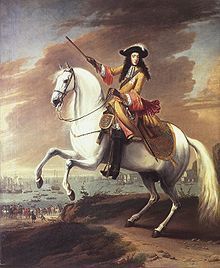
November 5 also recalls the invasion of Prince William III of Orange, landing at Brixham, Torbay in 1688. And this, also, to me is one of the saddest responses of the Anglican elite to the possibility of religious tolerance in England--invite an invasion and depose a legitimately ruling king!
William the new conqueror brought a force of around 21,000--mostly foreign mercenaries--including cavalry and artillery. The fact that 1688 was the 100th anniversary of the defeat of the Spanish Armada also seemed providential to the Whigs and Tories who rejected James II and his young son and heir. Unlike the Spanish attempt 100 years ago, this invasion would succeed!
Published on November 04, 2013 22:30
November 3, 2013
Alain de Botton on Velasquez
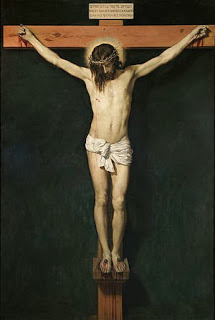
From this weekend's edition of The Wall Street Journal, Alain de Botton discusses Velasquez's painting, The Crucified Christ. According to the bio at the end of the article:
Mr. de Botton is the co-author with John Armstrong of "Art as Therapy" (Phaidon), from which this essay is adapted. From March to August 2014, Messrs. de Botton and Armstrong will rehang and recaption the works in the Rijksmuseum in Amsterdam according to the approach outlined in their book.
Comparing an "abstract black-and-white photo, "North Atlantic Ocean, Cliffs of Moher," by the Japanese artist Hiroshi Sugimoto" to Diego Velazquez's great masterpiece, de Botton writes:
Turning now to "Christ Crucified" by Diego Velazquez, the greatest artist of Spain's 17th-century Golden Age, we move from the mundane to the transcendent. Velazquez shows us the son of God, the King of Kings, bleeding on the cross like an ordinary stricken man. He will be dead in a few moments.
Christianity is upfront about the idea that our lives can be burdened by suffering. It takes the view that loss, self-reproach, failure, regret, sickness and sadness will always find ways of entering life. Our troubles need practical help, of course. But Christianity identifies another need as well: for our suffering to have some honor or dignity.
This picture of the Crucifixion achieves that. It shows a good—indeed, a perfect—man being humiliated, injured and ultimately killed. It is tenderly sympathetic to sorrow without being hysterical or vengeful. It invites us to contemplate the centrality of suffering in the achievement of all valuable goals. Rather than concentrate on our moments of fulfillment, it directs our attention to the times of hardship and sacrifice and says that they are the most deserving of admiration. It strengthens us a little—and offers consolation—for the hard tasks of our lives.
Published on November 03, 2013 22:30



